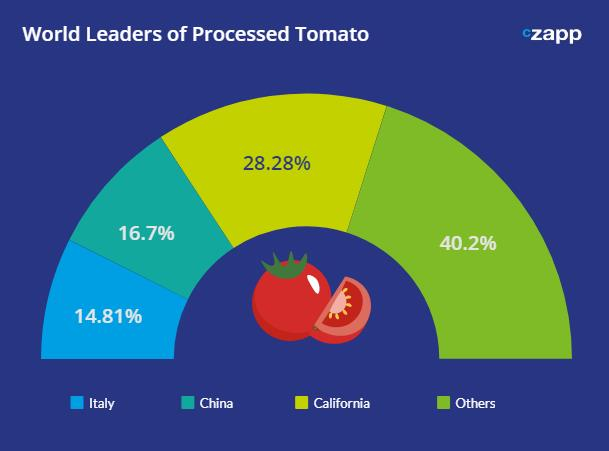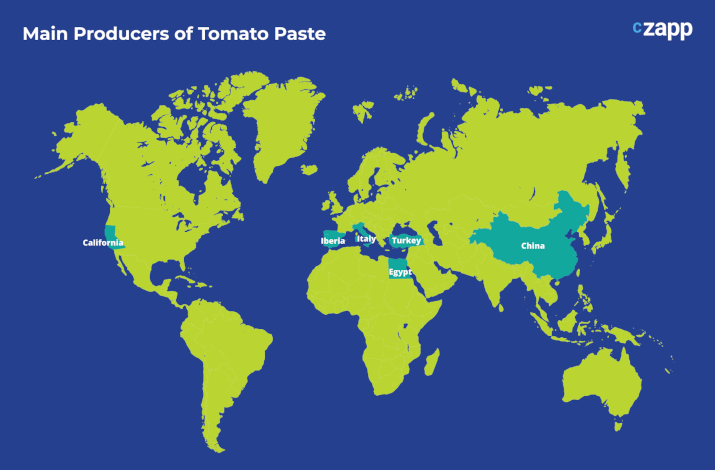Insight Focus
- Tomatoes are the world’s leading processed vegetable.
- Tomato paste is used across a range of foods.
- Find out more about what it is and how it’s made.
Tomato Paste Basics
Tomatoes are the world’s leading processed vegetable. Around 39m tonnes are processed annually around the world. Processed tomatoes are widely used in a range of easily recognizable products, such as pizza, ketchup and pasta sauce.

The US, China, Italy and Spain are the world’s top tomato processors, accounting for more than 60% of supply.

France, Germany, Italy, Japan, the Netherlands and the UK are major importers, accounting for more than 40% of tomato paste demand each year.
Although tomato products might be familiar, processors need to consider which characteristics they need from their tomatoes. Like most fruit and vegetables, different varieties of tomatoes have different specifications which can lead to diverse end-products. For example, the colour of the tomato and the resulting paste may be important for some.
The method of processing also matters. Tomatoes are processed by heating for several hours to reduce water content before seeds and skins are strained out. During hot break processing, the tomato pulp is heated to 105 degrees Celsius, whereas in cold break it is heated to 66 degrees.
Hot break paste has a thicker consistency than cold break paste and so is more suitable for the production of pasta sauces, ketchup and soups. Cold break paste is better used for reconstituting into tomato juice.
2023 Updates
Last year’s tomato crop was affected by poor weather and high energy costs, which led to lower production in greenhouses.
We think it’s possible 42.5m tonnes of tomatoes will be processed in 2023, but this figure has downside risk thanks to poor weather.
The main producers of tomato paste are in the northern hemisphere. Here the crop starts in July and lasts around 2 months, ending around September. Here are some progress updates ahead of the harvest.

China
Cold temperatures and snow in Xinjiang province has affected the average field yield, but we are struggling to quantify by how much. We think there may not be enough tomatoes to meet processing needs, which may lead to tomato and tomato paste price increases locally.
California
This year’s Californian harvest will be delayed, with larger volumes harvested in October. This will negatively affect the crop, which could be lower than 10.9m tonnes.
Egypt
With the summer crop starting this month, we expect to see tomato processing rise by 100k tonnes to 600k tonnes in total thanks to field investments. Although tomato processing volumes are small, Egypt is the 5th largest tomato grower in the world and so it could potentially become a more significant processor in the future. The government’s “Inclusive and Sustainable Development of the Tomato Value Chain” project is looking to increase the amount of tomato processing in-country.
Iberia
The situation in Portugal and Spain seems normal. But most of the crop is already booked and there are not many offers left.
Italy
The rainy weather in the North of Italy during May led to floods that affected the tomato plantations. The coming days will give us a better view of the total hectares damaged and the yield for 2023. In the South, less than favourable weather might lead to a delay in the harvesting.
Turkey
Rainy and cold weather that delayed planting in Bursa region, but production forecasts of 2.5m tonnes are unchanged for the time being. Currency devaluation might be important for local tomato paste prices.














